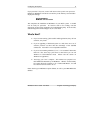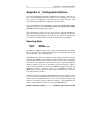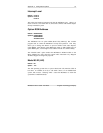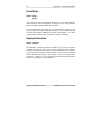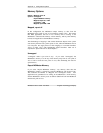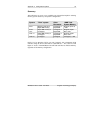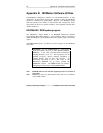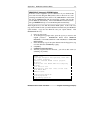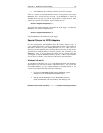
Appendix A Configuration Options 17
MCMaster User’s Guide - Rev. B06 Kingston Technology Company
Memory Options
Default: Mapped, report all
Options: Unmapped
Report MCMaster memory
Mapped, Report all, <16M
Unmapped, <16M
Mapped, report MM, <16M
Mapped, report all
In this configuration, the MCMaster remaps memory so that, from the
MCMaster CPU's point of view, its own memory appears "first." This means
that DOS applications that run in low memory will be running in the
MCMaster's onboard 32-bit memory. Planar memory, and any other memory
boards, are mapped above the MCMaster's memory.
The disadvantage of mapping is that another busmaster adapter in the system
sees memory from the host system's point of view, while the MCMaster has its
own viewpoint. We supply drivers to allow mapping to work under Windows
3.0/3.1 or OS/2 1.2/1.3 with busmastering SCSI controllers. Their use is
explained in "Special Drivers for SCSI Adapters."
Unmapped
"Unmapped" mode is just what it says. If you select "Unmapped," the
MCMaster's memory is at the top of the memory map from its own point of
view as well as from the host point of view, thus eliminating the need for
special drivers.
Report MCMaster Memory
If you select "Report MCMaster memory," any memory other than the
MCMaster's memory is ignored by both the MCMaster and the host CPU.
This combines the benefits of "Mapped" and "Unmapped" modes. Your
applications are guaranteed to be running in the MCMaster's 32-bit memory,
and the MCMaster's memory starts at address 0000 from both the MCMaster
and the host point of view.



